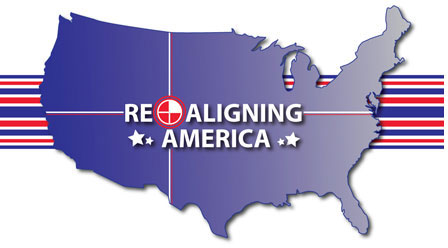Base-bound and bolt-bound problems do not need to be the end of your machine alignment. It just means the original rotational centerline of the stationary machine we want the movable machine to be co-linear with isn’t a practical solution. Most of the high-end laser alignment systems today have some kind of calculator to show alternate moves to complete this in one step (for example, the Fixturlaser XA Pro features the FootLock function). If your system doesn’t do the math for you, here’s a simple process you can use to solve your dilemma.
This is a two-step process: first, we have to adjust the stationary piece of equipment to reposition its rotational centerline; second, we need to finish our alignment. The goal of the first step is to simply rid ourselves of the base-bound (or bolt-bound) problem.
Let’s work through an example:
You have taken a set of alignment readings on a small motor-pump set and the vertical correction requires removing 20 mils from the rear of the motor. There are no shims under each of the motor rear feet to work with. You are base-bound by the difference of what you need and what you have, 20 mils – 0 mils = 20 mils. Adding shims to tip up the front of the pump is usually the solution but how much do we add? How can we reduce the amount we need to correct at the rear of the motor by 20 mils?
Start with the overall length of the equipment set–measure from the outside foot of the motor (movable) to the outside foot of the pump (stationary). Next measure the distance between the stationary feet. Then divide the overall measurement by the stationary foot measurement. This ratio will determine the “effect” of our adjustment on the stationary side, regardless whether you’re base-bound or bolt-bound, to the movable side.
The overall measurement on the motor-pump set is 21″. The distance between the front and back feet on the pump is 7″. The magic ratio is 21″÷ 7″ = 3. How much should we put under the front of the pump to solve our base-bound dilemma? 20 mils ÷ 3 = 6.6 mils. Rounding that off to 7 mils and adding to the pump front feet will raise the pump projected rotational centerline to +20 mils at the rear feet of the motor.
Put another way, if we draw a line from the motor rear feet to the pump rear feet, adding 7 mils to the front of the pump would put that foot on the same centerline. This would get us out of the base-bound problem without having to add or remove any shims at the motor rear feet.
To illustrate this example refer to the attached drawing. The red horizontal line represents the current pump rotational centerline with the locations of the equipment feet and coupling center indicated. The green line represents the current position of the motor’s rotational centerline. The dotted blue line indicates where the pump rotational centerline will move to by placing 7 mils under the pump front feet. Projecting the new pump centerline out to the motor rear feet shows the motor is no longer base bound as the two rotational centerlines intersect at this point.
The next step is to re-measure your alignment and fine tune to a precision state; this time you won’t be base-bound!





2 Comments
Great Information and valuable advice we can not find in any books.
My brother recommended I would possibly like this web
site. He used to be totally right. This post truly made my day.
You cann’t believe simply how a lot time I had spent for this info! Thanks!